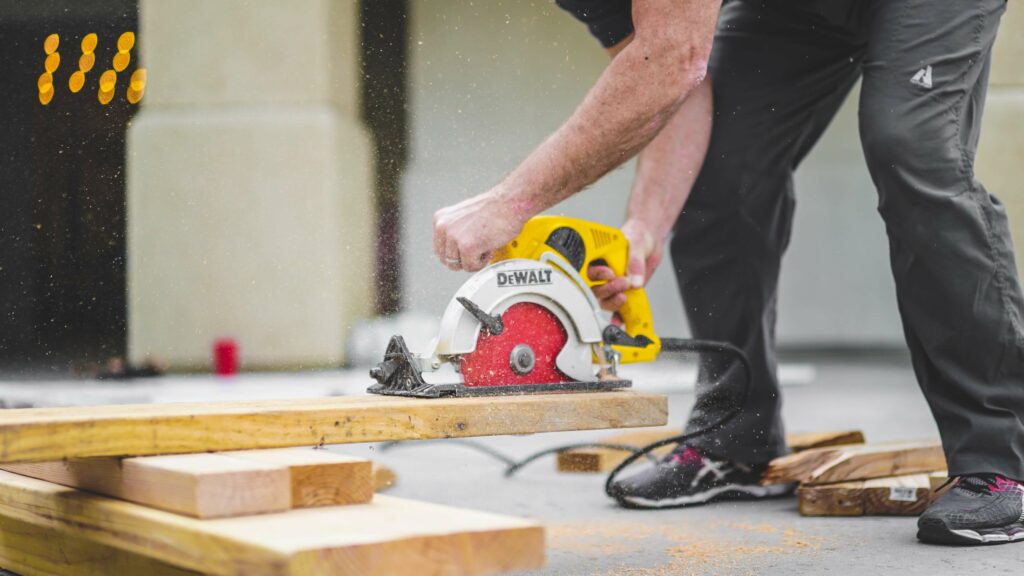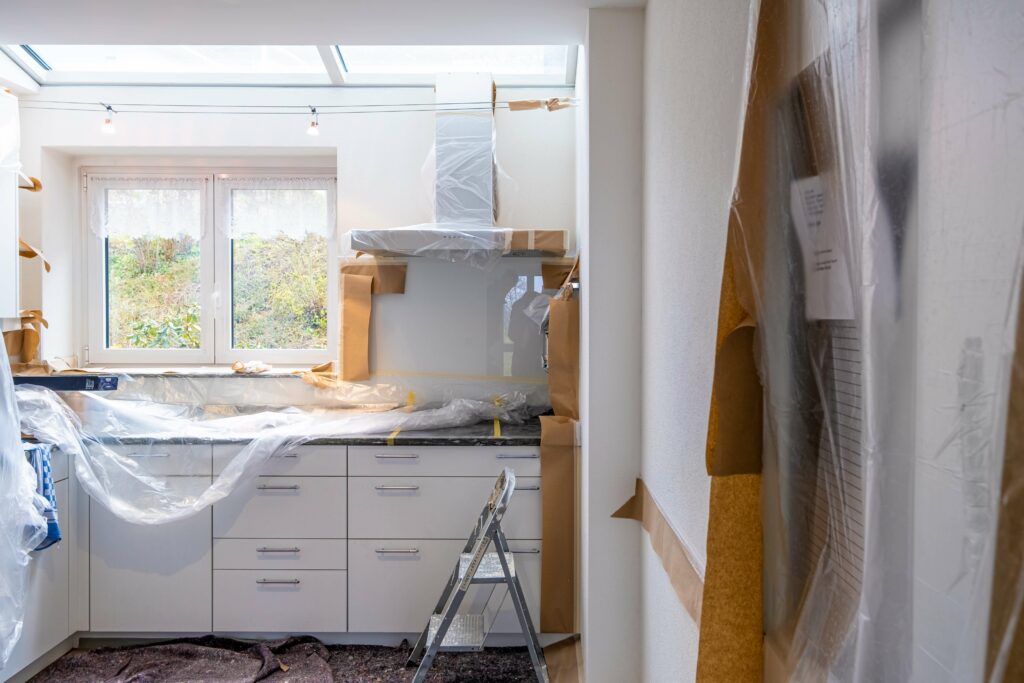To give your apartment or house a new lease of life, renovations are often necessary. Renovating a property requires a significant budget, which can be a considerable burden on your finances. However, it's important to know that work done on a property can entitle you to a significant tax reduction. Here are the details of the possibilities for tax reduction through renovations.
The Benefits of Tax Reduction for Renovations
Tax reduction is a strategy aimed at reducing taxation through various schemes. It involves investing part of your savings, income, or salary in a field that offers savings on tax rates in return. This practice is regulated by the General Tax Code and, more broadly, by French legislation. It can be seen as an investment that revitalizes sectors under pressure or neglected.
Tax reduction, regardless of its nature, has several advantages. Among them, you can distinguish tax deduction. This mainly involves tax reduction in specific areas, such as real estate. By carrying out specific works, you, as an investor, can pay less tax.
Tax reduction also offers the opportunity to build wealth without requiring a significant down payment. Some schemes allow access to property without directly paying the acquisition price. You will thus have the opportunity to acquire a property that you can rent out. The rents you receive and your tax deductions will be used to repay the mortgage you have taken out. Adopting the right tax reduction strategy allows you to make the most of your investment in the sector.
Tax-Deductible Works
Environmental issues have encouraged the government to embark on a policy of encouraging home renovations. Facade renovation, thermal insulation improvement, replacement of shutters, and more—there are many varied works to be carried out in an apartment or house. However, not all works can be tax-deductible. Before starting, you need to know the eligibility criteria for tax reduction.
Energy renovation works on a primary residence
In recent years, there has been a collective awareness of the importance of the environment. The government now encourages French citizens to optimize the energy balance of their homes. This can be achieved through energy renovation works.
This involves works aimed at improving the energy performance of a building. Among them, you can distinguish thermal and acoustic insulation, installation of renewable energy production equipment, installation of double glazing for windows, and more. It is worth noting that this type of work is mainly related to primary residences (houses or apartments).
Improvement works on rental housing
Landlords who want to make improvements to their rental properties can benefit from a reduction in the tax rate. The works can be deducted from rental income. After deducting the taxes, you can reduce the total cost of your works and enjoy an environment more suited to daily life. These improvements should thus provide benefits to the comfort of tenants, especially for disabled or elderly people. These are renovations that will facilitate their mobility and comfort in the accommodation.
The works can include :
- Installation of shower equipment, handrails, or adapted elevators for people with reduced mobility or dependent persons,
- Installation or replacement of a heating system,
- Installation of double-glazed windows or shutters,
- Optimization of thermal insulation,
- Installation of a fitted kitchen,
- Asphalting of a sidewalk adjoining the property,
- Provision of an elevator if the property is in a building,
- Replacement of a bathtub with a shower equipped with thermostatic taps,
- Installation of a low condensation boiler.
These works are considered improvements as long as they involve modernizing a property or directly related infrastructure. They entitle you to a tax credit of 25% of your expenses, including labor. These works must be carried out in premises used for residential purposes, commercial premises, professional premises, or rural properties. However, you must ensure that these improvements do not entail any structural modifications to the property. Reconstruction or enlargement works will not be tax-deductible.
Renovation Works on an Old Property
For prospective landlords looking to acquire a property in an old neighborhood, there is an opportunity for tax relief through the Denormandie law. This scheme allows for renovation and refurbishment of a non-new dwelling with the intention of renting it out. The property in question must be located in a town undergoing rehabilitation (subject to urban renewal projects).
The renovation works must meet several criteria. The works must improve the energy performance of the property by at least 30%. They must be carried out by an RGE-certified company (Recognized Guarantor of the Environment). They must also represent 25% of the total acquisition cost, including notary fees. The assistance granted will be approximately 12%, 18%, or 21% of the transaction amount.
Expenditure on Repair and Maintenance Works
Tax relief for renovation works applies to primary residences and rental properties. For the latter, all repair and maintenance works borne by the landlord are deductible from rental income. This tax advantage can cover :
- Facade refurbishment,
- Roof renovation,
- Repainting,
- Sewer system refurbishment,
- Electrical installation renovation,
- Installation of central heating,
- Study and energy diagnostics fees,
- Creation of a central parking lot in a building courtyard.
Applying a fresh coat of paint between two tenancies can thus be considered a genuine maintenance expense for a landlord. This type of work is part of various deductible expenses when filing taxes. This relatively advantageous reduction encourages landlords to carry out proper and regular maintenance of their properties. It also helps to limit uninhabitable rentals across the entire territory.

You're just a few clicks away from renovating your home.
Tax Reduction Tools
Tax credit, tax deduction, tax reduction, or works deductible from rental income, numerous tax advantages are available to property owners. However, owners must carefully choose their tax reduction schemes.
Property Deficit
A property deficit can occur when your expenses on a rental property exceed the income generated. It's possible to deduct a portion of this deficit from your taxable income. However, only certain specific expenses qualify for deduction.
Among the deductible expenses, you can identify certain co-ownership charges, property tax, premiums, and management and rental fees. Your maintenance and renovation costs fall into this category, but you can only deduct a maximum amount of €10,700 per year. The same applies to expenses related to equipment, electricity, plumbing, and renovation. Any surplus can be carried forward for up to 10 years. Calculating property deficit may seem complex; this site details deficit calculation and carryovers for subsequent years.
The Malraux Law
As part of an investment in rental property in an old building with aesthetic or historical significance, you must carry out renovation work. These works entitle you to a tax reduction based on the classification of your property under the Malraux Law. You should know that old properties have unique appeal and are considered a rare asset in the real estate market. Renovation and maintenance costs can quickly become substantial burdens.
The Malraux scheme allows for a tax reduction if expenses amount to :
- 30% of the cost of works for buildings in a remarkable heritage site with a PSMV (Safeguarding and Enhancement Plan) ;
- 22% of the cost of works for buildings in a remarkable heritage site with a PVAP (Architecture and Heritage Enhancement Plan).
The works carried out must be supervised by an Architect of Buildings of France (ABF). The cost of works considered for tax reduction is capped at €400,000 over 4 years. This deadline starts from the date of issuance of the work permit. The property must also be rented unfurnished for a minimum period of 9 years.
Historical Monuments Law
Like the Malraux Law, the Historical Monuments (MH) fiscal scheme is a mechanism for real estate tax reduction in old properties. It applies to a classified historical monument. By derogation from the standard regime, the owner of such a property can deduct several expenses from their total taxable income. These include renovation costs and expenses associated with property ownership.
The resulting deficit is not capped. To be considered "MH," the building must be classified as a historical monument or listed in the additional inventory of historical monuments. This also applies to properties that have obtained the label from the Heritage Foundation. However, for the latter, works and expenses are deductible at 50% instead of 100%.
To benefit from the MH tax regime, as a buyer or owner of a historical monument, you must meet 3 cumulative conditions. Thus, you must commit to preserving the property for at least 15 years. You must directly own the building, except for exceptions (family real estate investment company, real estate investment company, or approved real estate investment company). The building must not be subject to condominium ownership, except for specific approval.
The Pinel Law
Best known in the new construction sector, the Pinel law also allows for rental investment in old properties. It applies to old properties requiring significant rehabilitation or renovation work (uninhabitable or indecent properties). This scheme is also used for properties to be converted into residential units (offices, commercial premises). Note that the building must be renovated to new standards to qualify for this scheme.
To be eligible for this mechanism, taxpayers must meet several conditions. The building must obtain a BBC (Low-energy Building) renovation label or HPE (High Energy Performance) renovation at the end of the works. After renovation or conversion, the property must be rented (unfurnished). All of this is done in compliance with standard Pinel conditions (rental caps, tenant income, geographical areas).
The old Pinel law allows for a tax reduction ranging from 12% to 21% of the total investment cost. This tax advantage is calculated based on the duration of the lease (from 6 to 12 years). It is capped at €300,000 per year and per taxpayer, including all expenses related to the investment (works, acquisition costs, purchase price...).
The Denormandie Scheme
The Denormandie scheme is similar to the old Pinel scheme. However, it applies to old residences requiring renovation for rental purposes, located in cities eligible for this type of tax relief. These are mainly medium-sized towns requiring revitalization of the rental housing stock. The tax benefits are the same as those of the old Pinel scheme, but the cost of renovation work must represent at least 25% of the investment. These works must also focus on optimizing energy performance.
The Cosse Law
The Cosse law is an interesting scheme for tax reduction on your works. The goal is to help people in difficulty or with low incomes access housing. The ANAH (National Housing Agency) can partially finance these works through various subsidies. You thus benefit from a tax deduction on your rental income, the rate of which is determined based on :
- the area where your property is located,
- the social level and rental sector of the tenant (intermediate, social, or very social).
To benefit from this tax reduction and save on taxes, you must become or be the owner of an old property. You must also sign an agreement with the ANAH to officially rent out your building in the rental sectors. Rents and tenant resources are capped and set by the ANAH.
The property must be rented unfurnished as the primary residence for a minimum period of 6 or 9 years. It must also meet an energy performance condition and consume less than 331 kWh/m2/year.

You're just a few clicks away from renovating your home.
Deducting Renovation Works
The tax deduction for your renovation, improvement, maintenance, or enhancement works should be included in your income tax return. The modifications and upgrades made should also be listed in the deductible works from the previous year's taxes. You can find this information on line 224, "Expenses for repair, maintenance, and improvement." Then, simply complete the breakdown of expenses. This document will provide the building number, nature of the works, names and addresses of the contractors, and the payment dates.
No supporting documents need to be attached to the declaration. However, it is mandatory to keep the invoices from the companies hired to carry out the declared works. The tax authority may request them at any time. Failure to provide these documents will result in the loss of the corresponding tax benefit. Additionally, you may be required to repay any previously saved amounts.
To deduct your works from taxes, you must meet several conditions. The renovations and enhancements made should not result in the refurbishment or construction of a building, but rather a dwelling. The property must also have been completed for at least 2 years. The materials and services listed in the declaration must have been provided by a company.





